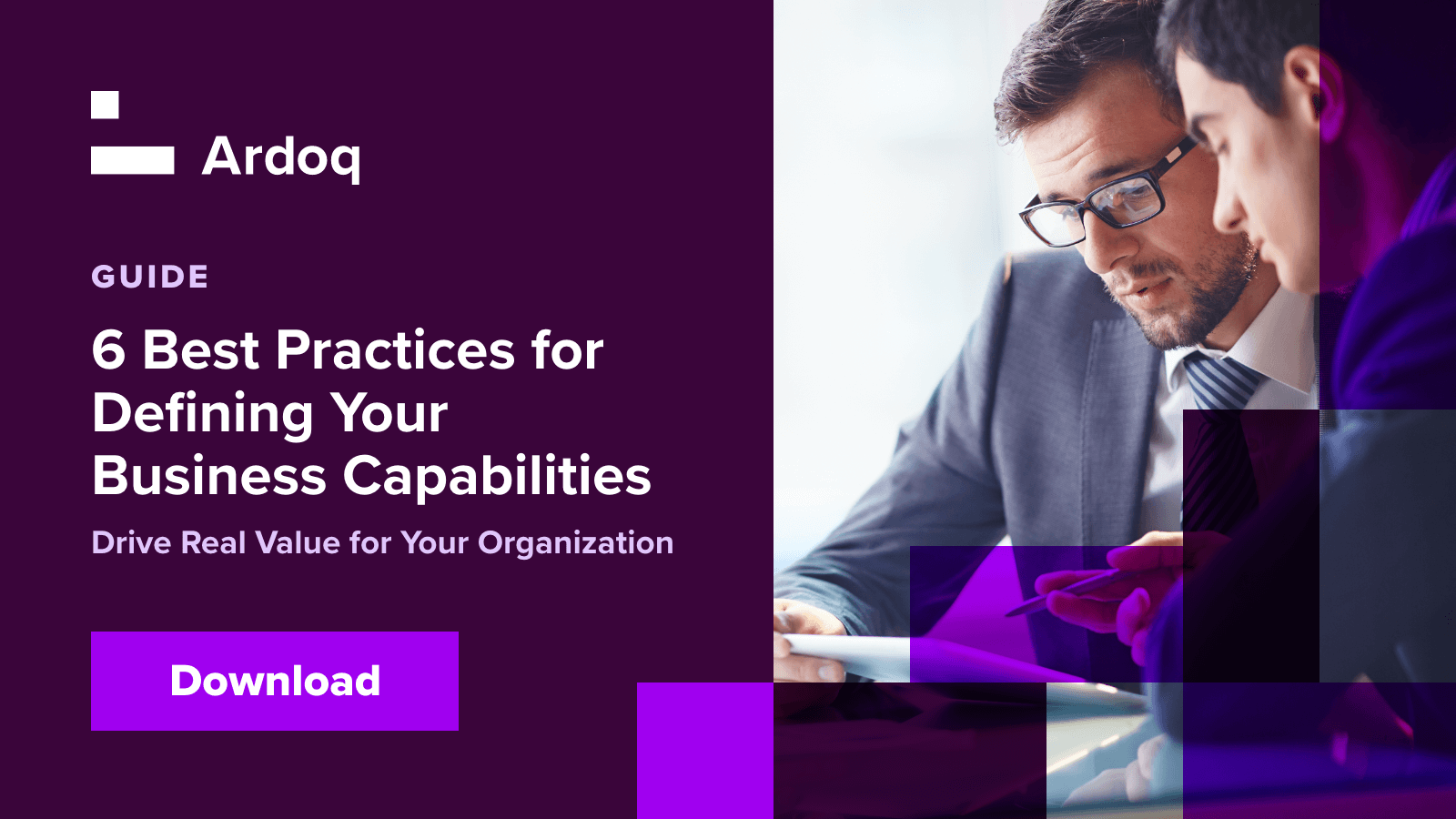In today's rapidly changing business environment, strategic success is critical for organizations to remain competitive and sustainable in the long term. However, achieving strategic success is not an easy task. It requires navigating the sprawling complexities of organizational charts, technological ecosystems, and ever-growing amounts of disconnected data.
One approach that can help organizations become more aligned to achieve strategic success is capability-based planning. This blog post will quickly define what it is, how it contributes to strategic success, and how to get started.
What Is Capability-Based Planning
Capability-based planning is a method of planning and decision-making focusing on an organization's capabilities rather than specific goals or objectives. Capabilities are essentially a list of activities an organization can do, logically grouped around common resources that they access such as a particular kind of information. At the highest level these could be things such as finance and marketing analytics. Business capability modeling means defining and modeling a business by its capabilities to help separate out the “how” from the “what”. “What” a business does changes much less than the “how”, that is the processes, systems and teams that accomplish them. Capabilities can form a simple, common language to improve cross-functional understanding of the organization.
Capability-based planning recognizes that goals and objectives evolve over time, so the most effective way to achieve them is to build and maintain a strong foundation of capabilities that can be leveraged in a variety of different contexts. This enables organizations to become more agile in the face of changing circumstances, internal and external. Capability-based planning differentiates capabilities into three main types: core, supporting, and strategic.
Capability-based planning differentiates capabilities into three main types: core, supporting, and strategic.
- Core capabilities: Essential to an organization’s main purpose and value chains creating those products or services.
- Supporting capabilities: Enable the organization to operate as a whole such as financial reporting or facility management. These capabilities are not directly involved in value creation for customers but are necessary for the enterprise.
- Strategic capabilities: Exist to help the organization set direction and plan, such as enterprise architecture and project portfolio management.
Categorization of capabilities helps enterprises get a better understanding of the different outcomes investing in various capabilities could have and for which stakeholders.
Three Benefits of Capability-Based Planning
Enhanced Flexibility and Agility
One of the main benefits of planning based on capabilities is that organizations can be more adaptable and responsive to changing circumstances. By focusing on developing a strong foundation of capabilities, organizations are better equipped to respond to new opportunities and challenges as they arise, rather than being tied to a specific set of goals or objectives that may become outdated or irrelevant.
Improved Alignment of Resources
Capability-based planning allows businesses to allocate resources more efficiently. By focusing on capabilities, businesses can more effectively identify areas that require investment and reallocate resources accordingly. This approach ensures that resources are aligned with the strategic objectives of the business.
Better Decision-Making
Capability-based planning enables businesses to make informed decisions. With a clearer awareness of the organization’s capabilities, businesses can make decisions that align with their strengths and goals. This approach ensures that businesses make decisions based on more accurate data and analysis rather than intuition or guesswork. In addition, capability-based planning allows businesses to focus on their capabilities rather than specific products, services, or markets. This approach encourages strategic thinking by identifying strengths and weaknesses, opportunities, and threats in current operations.

How to Get Started With Capability-Based Planning
1. Get stakeholders involved in foundational discussions
It is important to begin a capability-base planning initiative with some foundational discussions over what is valued as core to the business and how the business differentiates itself from competitors. Making these points explicit helps make process clearer and more actionable, improving alignment across the enterprise.
2. Pick a dynamic capability-based planning tool that enables data-driven modeling
Capability models have been around for decades and are not new concepts. However, what makes them especially valuable today is the possibility of having these capabilities mapped or modeling in a dynamic, data-driven new Enterprise Architecture tool that can be connected to other aspects of the enterprise. This means that capability models can keep pace with the rapid change in enterprises today. It also means that these models can be more easily kept relevant and up-to-date, reflecting the real-time connections between people, process, and technology.
3. Leverage an established capability-based planning methodology but don’t be restricted by it
Beginning with a tried and tested capability-based planning methodology for a given industry or organization can greatly speed up the modeling process. However, it is important to remember to model what is most important to an enterprise’s main objectives.
4. Start small to improve decision-making sooner rather than later
The best way to ensure that capability-based planning will aid the business is to begin the process with the core business challenges or goals in mind. Remember to consider:
- Which area of the business is most critical to the organization’s strategy?
- Which capabilities are these critical business areas dependant on?
- Where are the organization’s core capabilities and what is their maturity?
- Does this align with the company’s long-term strategy and if not, where should the company be investing?
These are just some of the questions that can help focus the development of a capability model. The model can always be built on and expanded as the business requires. Connecting the capability model to other models or information, such as the application portfolio or the enterprise’s technical capabilities for example, can unlock powerful insight into cost saving opportunities. The connections reveal duplicate systems, risks where core capabilities are dependent on unreliable technology, and opportunities where investment could help differentiate the enterprise from competitors.
In conclusion, capability-based planning is an approach that can help businesses achieve success in today's highly competitive business environment. By focusing on capabilities, businesses can enhance strategic thinking, improve collaboration, and make more effective decisions to move the organization forward. Just as critical to the planning process is the choice of a capability-based planning tool. Deploying a data-driven platform to define and model capabilities will set the enterprise up for success as it continues to grow and evolve.

%20(1200%20x%20628%20px).png?width=500&name=AI%20in%20BVS%20blog%20Image%20(featured)%20(1200%20x%20628%20px).png)






/Logos/Ardoq/RGB_Ardoq_Logo_Stacked_White_Monochrome%201.png?width=80&height=77&name=RGB_Ardoq_Logo_Stacked_White_Monochrome%201.png)

